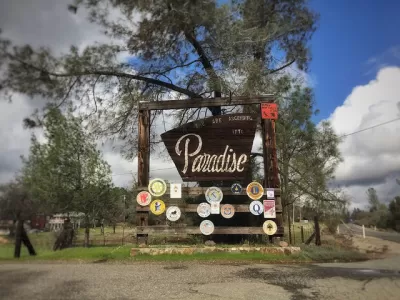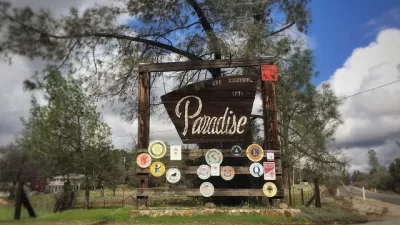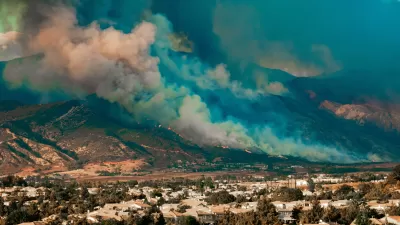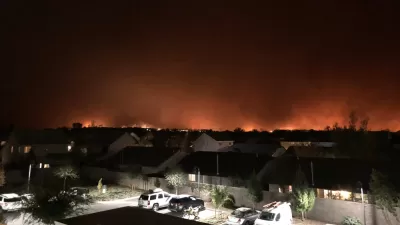Paradise, California—devastated by the deadly Camp Fire of 2018—is attracting new and returning residents as the city rebuilds its housing stock.

California’s latest population estimates show that Paradise—the Northern California town ravaged by the Camp Fire in 2018, which destroyed 10,000 buildings and killed 85 people—has seen the fastest population growth in the state in the last year.
According to estimates from the California Department of Finance, "the population of Paradise rose from 4,608 people as of Jan. 1, 2020, up to 6,046 a year later," reports Vincent Moleski.
"The town’s 31.2% leap in population outpaces the rest of the state, much of which reflected a decrease in population amid low birth rates and slower immigration," adds Moleski. The figure are even more of any outlier compared next to the totals for the entire state, which dropped in 2020 for the first time in recorded state history, as documented in an article yesterday by Planetizen correspondent Irvin Dawid.
Moleski takes the additional step of naming the cause of Paradise's influx or population: new housing construction rising from the ashes of the Camp Fire. In addition to outpacing the rest of the state in population growth, Paradise has also been outpacing the state on housing construction. "Department of Finance data show that the town increased its total housing by 32.1% in 2020, the fastest rate in the state. Much of this construction has been in single-family homes. The town’s number of single-family homes rose by nearly 40.7%, while its multi-family homes increased by 11.5%."
As documented in an article by Natalie Hanson for the Chico Enterprise-Record in December 2020, the bulk of the city's building permits have been issued to residents looking to rebuild homes lost in the Camp Fire.
FULL STORY: Paradise's population surges, fueled by new housing construction in wake of Camp Fire

Maui's Vacation Rental Debate Turns Ugly
Verbal attacks, misinformation campaigns and fistfights plague a high-stakes debate to convert thousands of vacation rentals into long-term housing.

Planetizen Federal Action Tracker
A weekly monitor of how Trump’s orders and actions are impacting planners and planning in America.

In Urban Planning, AI Prompting Could be the New Design Thinking
Creativity has long been key to great urban design. What if we see AI as our new creative partner?

King County Supportive Housing Program Offers Hope for Unhoused Residents
The county is taking a ‘Housing First’ approach that prioritizes getting people into housing, then offering wraparound supportive services.

Researchers Use AI to Get Clearer Picture of US Housing
Analysts are using artificial intelligence to supercharge their research by allowing them to comb through data faster. Though these AI tools can be error prone, they save time and housing researchers are optimistic about the future.

Making Shared Micromobility More Inclusive
Cities and shared mobility system operators can do more to include people with disabilities in planning and operations, per a new report.
Urban Design for Planners 1: Software Tools
This six-course series explores essential urban design concepts using open source software and equips planners with the tools they need to participate fully in the urban design process.
Planning for Universal Design
Learn the tools for implementing Universal Design in planning regulations.
planning NEXT
Appalachian Highlands Housing Partners
Mpact (founded as Rail~Volution)
City of Camden Redevelopment Agency
City of Astoria
City of Portland
City of Laramie





























